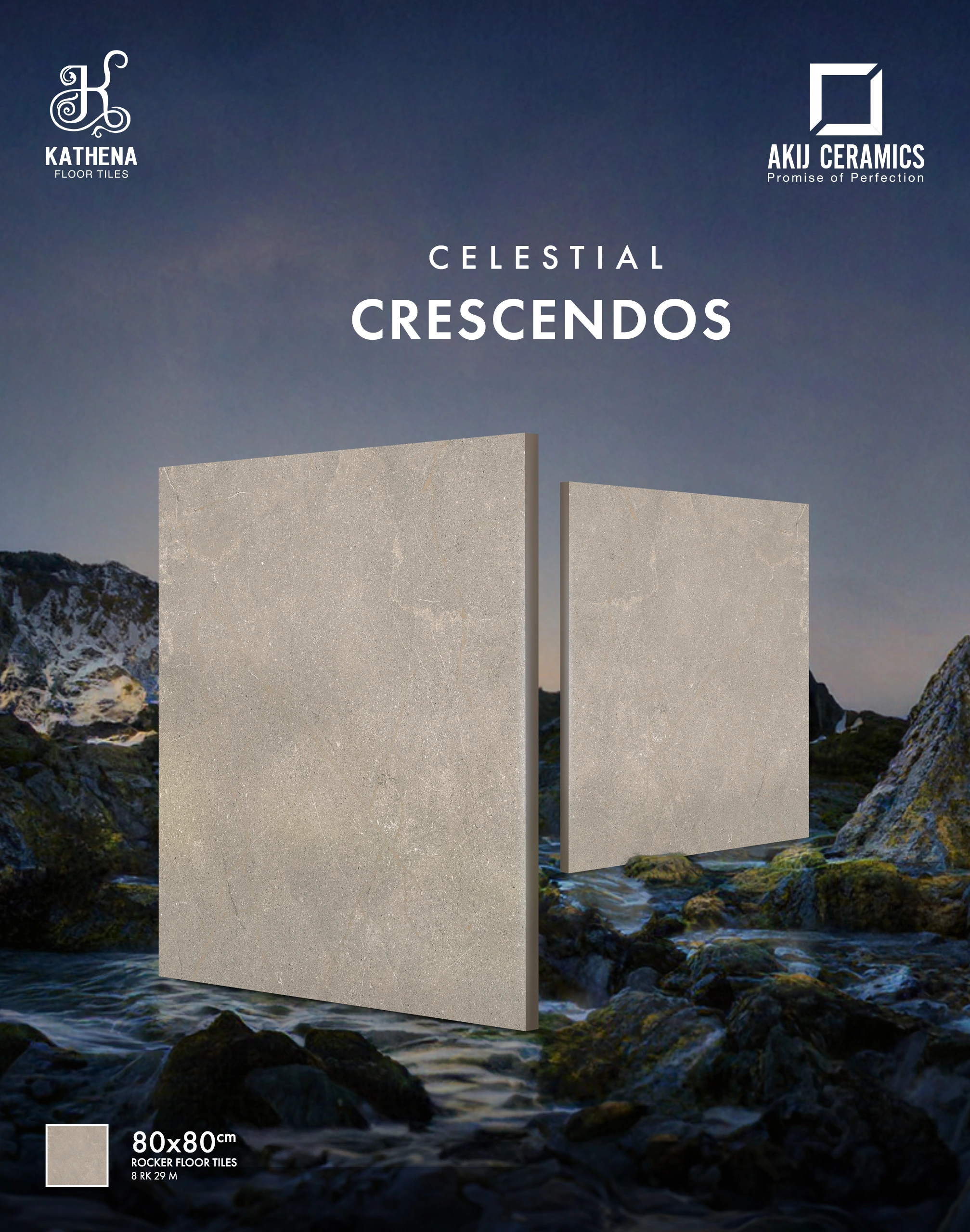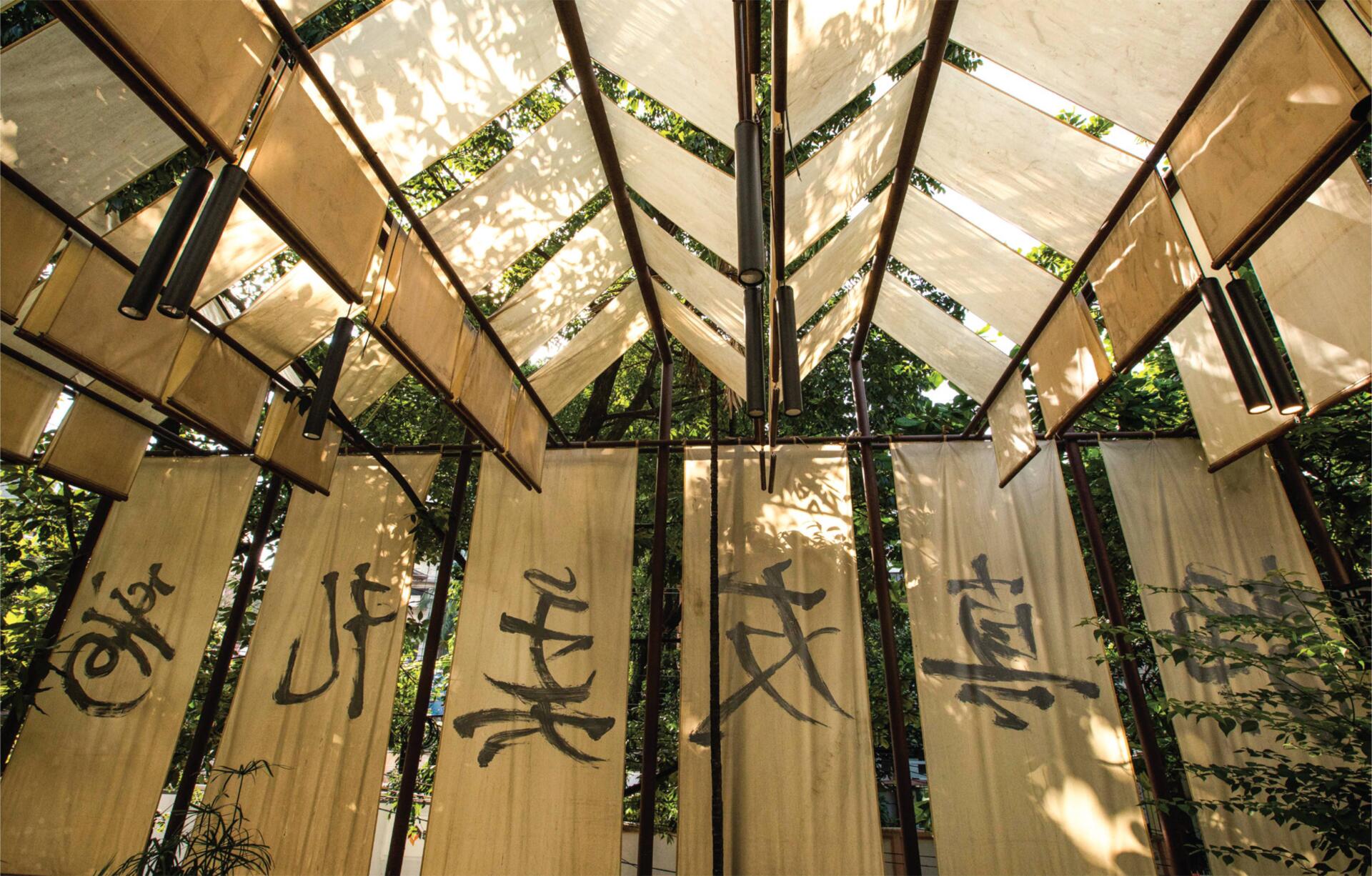
If you’re in the mood for a sublime space and Japanese cuisine, Sushi Tei is the place. Sushi Tei interior aspires to a state of harmony, serenity, and simplicity. Clean lines, uncluttered areas, and a minimalist approach are used in the design to foster a serene mood.
Popular Japanese restaurant chain Sushi Tei is known for its sushi and other Japanese cuisine. It began its journey in Singapore and has since spread to several Asian nations including Bangladesh. In 1994, it was opened in Singapore and in Bangladesh it’s first introduced in 2020 at Gulshan, Dhaka.

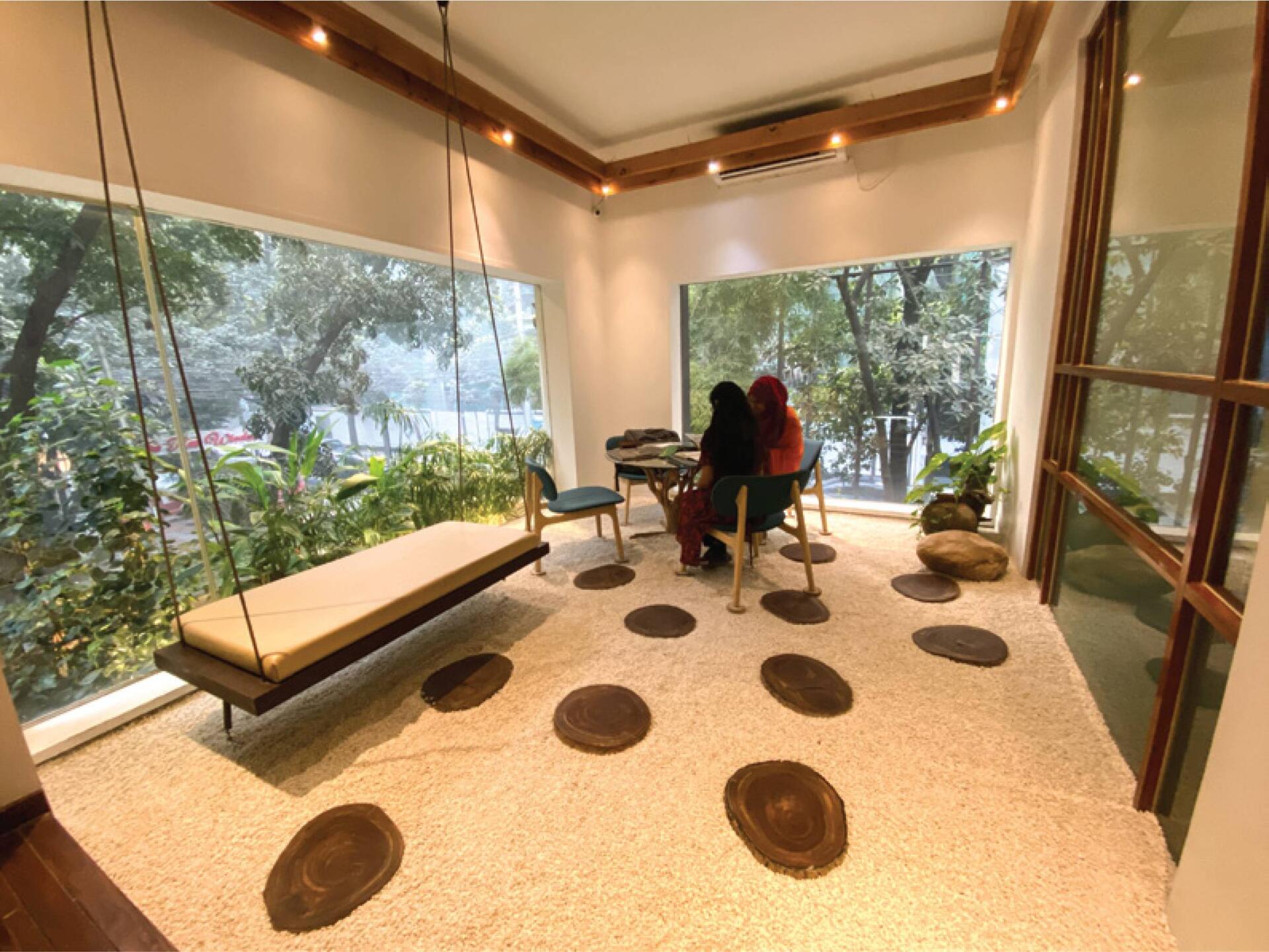
The interior reflects Japanese culture’s Zen Garden idea. recognising and praising the genuine shape and colour that permeated the entire area. A sturdy Keora tree root sculpture stands out at the entrance. A component of nature, yet in its unaltered, unadulterated state, it exudes a unique aesthetic appeal. On the exterior, the GP sheet and MS sheet sculpture blend with the creepers, creating a green facade. The transition from the outside to the inside is thoughtfully planned. At the entryway, a zen garden is included to go with the wooden pavers. A large waiting area is available at the reception desk on the ground floor to welcome visitors. The first floor is where the restaurant is. The staircase’s Tuna fish sculptures on the wall and the north-diffused light from the opening offer visitors a sense of calmness. The entire experience—from the outside to the inside—is a voyage into meditation.

“It’s pretty difficult to convert a residential property into a restaurant space. I liked the entire area as there were a lot of space and trees surrounding the structure. The obstacles we experienced served as the inspiration for every design choice,” explains the interior designer and artist Md. Mazharul Haque Tonmoy. “It had an issue with water clogging since the surface in the area was lower than the road. To address that, we included soak-able green areas, which allowed us to design an outdoor zen garden.” The restaurant’s aesthetics favour a subdued and neutral colour scheme. Earthy tones such as beige, cream, soft greys, and muted greens have been used to create a calm and soothing atmosphere. The focus is on functionality and creating a sense of spaciousness.
The use of natural materials is remarkable. Wood, bamboo, stone, and natural fibres like cotton are incorporated into the restaurant’s interior. Exposed wooden beams, bamboo partitions, and stone accents create a sense of warmth and authenticity. Sushi Tei’s interior emphasizes open spaces and a sense of flow. The layout of the restaurant allows a smooth transition between different areas. Open floor plans, sliding doors, and screens are used to create flexible spaces that can be adapted for different group sizes or private dining options. It’s fascinating how different types of floor materials are used to separate spaces. To accommodate various visitor demands, various sitting configurations, including booth seating, low-height seating, and Takumi seats, have been implemented.
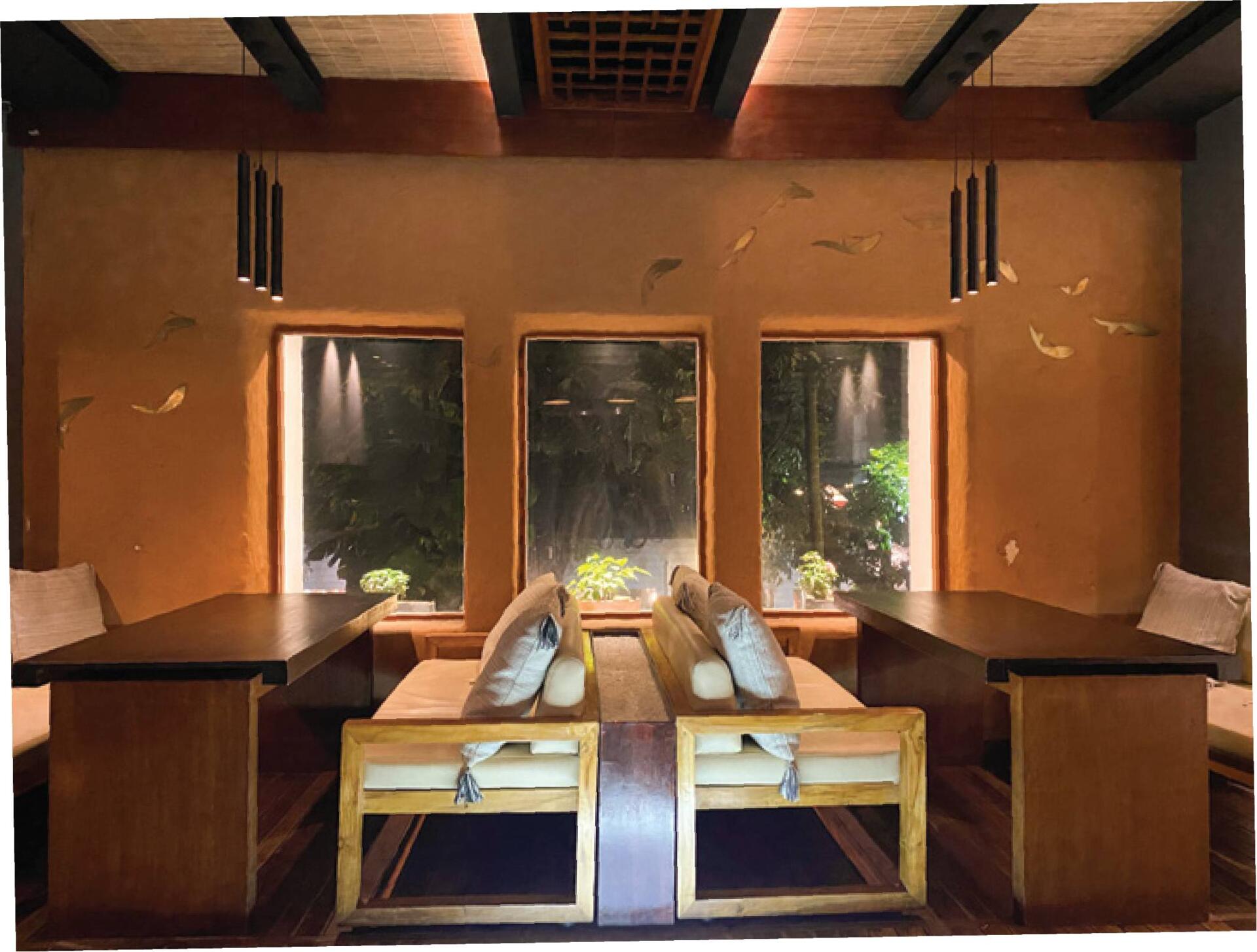
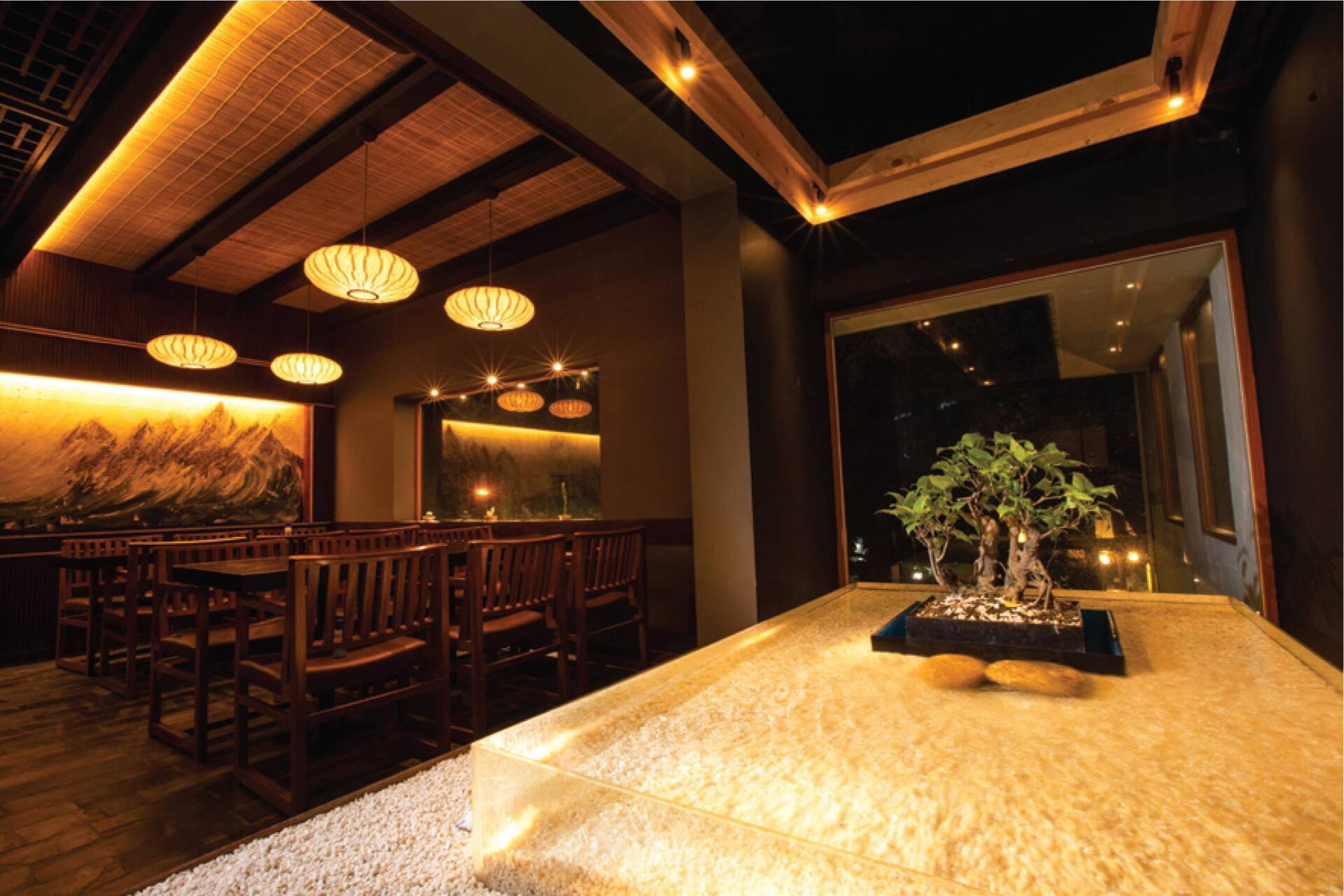
Gentle and warm lighting played a crucial role in this Zen-inspired restaurant. Soft, diffused lighting fixtures like pendant lights, paper lanterns, and wall sconces have been used to create a tranquil atmosphere. While the space is designed as a low-light space, maximising natural light through large windows or skylights is also incorporated to establish a connection with the outside world.
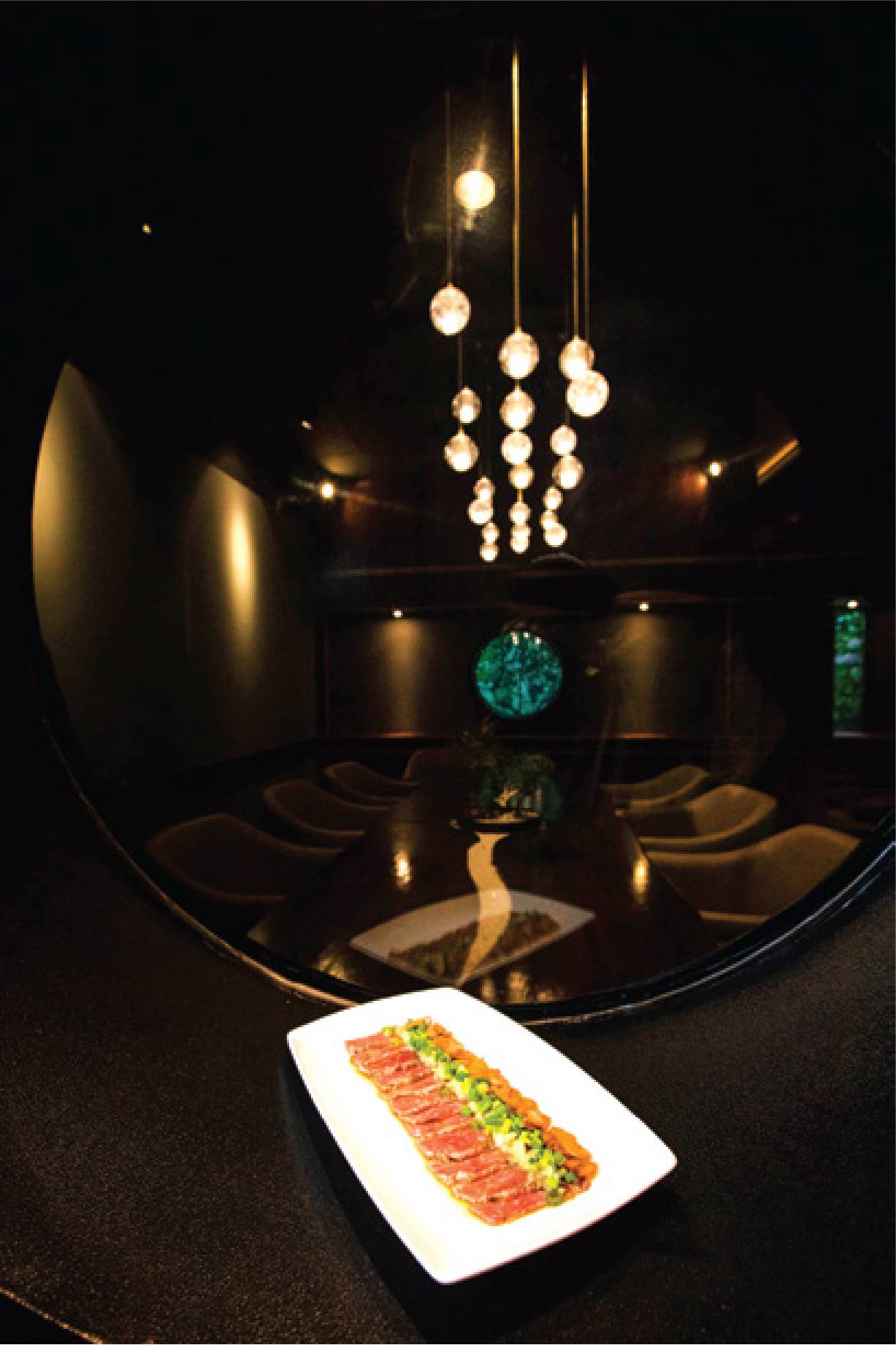
Incorporating Japanese artwork, calligraphy, or traditional motifs enhanced the Zen aesthetic. Hanging scrolls (kakemono) with brush paintings, ink wash paintings (sumi-e) and carefully selected artwork provide focal points and add cultural depth to the space. The acoustics of a dining area are crucial to its ambiance. The soft trickling of fountains and running water is now present. The ambient noise was softened with the help of a miniature indoor fountain.
To add a touch of nature and artistry, Sushi Tei’s zen garden displays bonsai trees. These meticulously crafted arrangements reflect the Japanese appreciation for beauty and harmony in nature. The entirety of the setting is ideal for taking photos.
The use of mirrors and glasses is fascinating. “The Japanese are very sensitive about their design. The patterns they use on their screens are also very detailed. We tried to follow their process of design, not a specific design. The philosophy was to let the space speak for itself about how it wanted to be treated. We were just trying to listen,” Md. Mazharul Haque Tonmoy added. Sushi Tei, provides an oasis of calm for guests, allowing them to relax, unwind, and appreciate the simplicity and beauty of their surroundings while enjoying their dining experience. Written by Fatima Nujhat Quaderi













 Total views : 22803
Total views : 22803